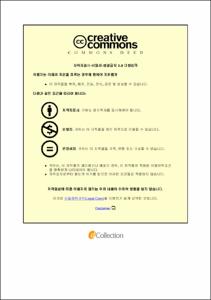에탄올 / 휘발유 혼합연료의 자연점화 및 오염물질 배출 특성에 관한 연구
- Alternative Title
- The Study on Characteristics of auto-ignition and pollutant
- Abstract
- The recent development of biofuel production technology facilitates the use of bioethanol and biodiesel on automobile. Especially, bioethanol can be used as a fuel for gasoline vehicles because the addition of ethanol increases octane and improves vehicle emissions. When the alternative fuel such as bioethanol is used in transportation system, some safety problems will be occurred. First problem is a direct safety issues such as a fire. Transportation fire has occurred more than five thousands events annually in Korea, and the induced loss as well as direct property and human ones is severe and results to the traffic and environmental pollution. The recent development of automobile technology such as hybrid concept and the use of bio fuels make the fire protection to be difficult, and more understanding on the mechanism and performance has been required. The second problems is related to the environmental issues, of which various pollutants is emitted during combustion.
In this study, the combustion characteristics of gasoline/ethanol fuel were investigated by pool fire experiment and WSR numerical simulation. Soot yield was decreased dramatically as ethanol was added, but NOx emission was almost comparable regardless of ethanol volume fraction. The numerical simulation was performed on the well stirred reactor (WSR) to simulate the homogeneous gasoline engine and to clarify the effect of ethanol addition on the ignition and pollutant emissions such as NOx and soot. Also, response surface method (RSM) was introduced as a design of experiment (DOE), which enables the various combustion properties to be predict and optimized systematically with respect to three independent variables, i.e. ethanol mole fraction, equivalence ratio and residence time. The results of stoichiometric gasoline surrogate show that the auto-ignition temperature increases but NOx and soot precursor (pyrene) emissions decrease with increasing ethanol mole fraction. This implies the bioethanol added gasoline is more eco-friendly fuel on engine running condition. However, unburned hydrocarbon is increased dramatically with increasing ethanol content, which results from the incomplete combustion and hence need to adjust combustion itself rather than an after-treatment system. RSM results analyzed with three independent variables predict the auto-ignition temperature accurately. However, NOx emission had a big difference between the calculated values and the predicted values using conventional RSM because NOx emission varies very steeply and hence the obtained second order polynomial cannot follow the rates. To relax the increasing rate of dependent variable, NOx emission is taken as common logarithms and worked again with RSM. NOx emission predicted through logarithm transformation is in a fairly good agreement with the experimental results.
- Issued Date
- 2017
- Awarded Date
- 2017. 8
- Type
- Dissertation
- Publisher
- 부경대학교
- Alternative Author(s)
- Kim Shin-Woo
- Affiliation
- 부경대학교 대학원
- Department
- 대학원 안전공학과
- Advisor
- 이의주
- Table Of Contents
- 목 차
1. 서 론 1
1.1 연구 배경 및 목적 1
1.2 배경 이론 3
1.2.1 차수감소모델과 회귀분석 3
1.2.2 실험계획법(DOE, Design of experiment) 7
1.2.3 반응표면법(RSM, Response surface method) 7
1.2.4 오염물질 배출 12
2. 에탄올/휘발유 혼합연료의 연소특성 18
2.1 Cup-burner 에탄올/휘발유 혼합연료 연소 실험 18
2.1.1 실험장치 18
2.1.2 실험방법 및 조건 20
2.1.3 실험결과 20
3. WSR를 이용한 에탄올/휘발유 혼합연료의 연소특성 27
3.1 에탄올/휘발유 혼합연료의 연소 생성물 배출특성 27
3.1.1 WSR 모델 수치해석 27
3.1.2 WSR 입력조건 30
3.1.3 결과 및 분석 33
3.2 에탄올/휘발유 혼합연료의 자연점화 특성 54
3.2.1 발화온도 계산 검증 54
3.2.2 수치해석 조건 56
3.2.3 점화온도 수치해석조건 및 결과 56
3.2.4 점화온도 수치해석 결과 회귀분석 58
4. 결론 62
4.1 Cup-burner 실험 62
4.2 PSR모델 수치해석 62
4.3 자연발화온도 수치해석 63
참고문헌
- Degree
- Master
- Files in This Item:
-
-
Download
 휘발유 혼합연료의 자연점화 및 오염물질 배출 특성에 관한 연구.pdf
기타 데이터 / 3.39 MB / Adobe PDF
휘발유 혼합연료의 자연점화 및 오염물질 배출 특성에 관한 연구.pdf
기타 데이터 / 3.39 MB / Adobe PDF
-
Items in Repository are protected by copyright, with all rights reserved, unless otherwise indicated.